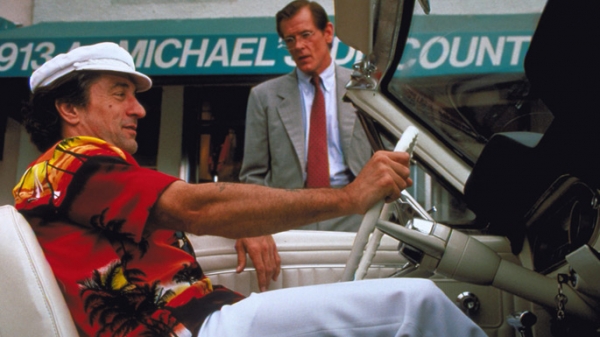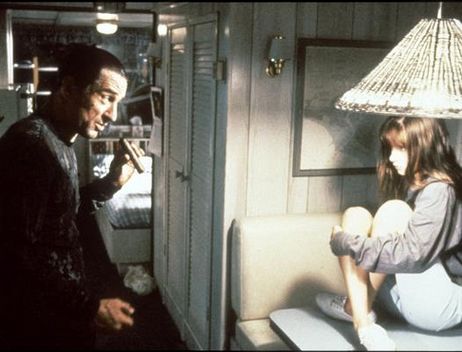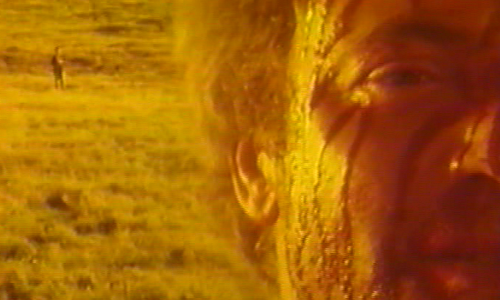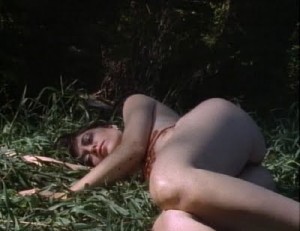From the Chicago Reader (November 22, 1991). — J.R.


CAPE FEAR
* (Has redeeming facet)
Directed by Martin Scorsese
Written by Wesley Strick
With Robert De Niro, Nick Nolte, Jessica Lange, Juliette Lewis, Joe Don Baker, Illeana Douglas, Fred Dalton Thompson, and Robert Mitchum.
I have nothing against pornography when it’s good, clean sex, but I don’t enjoy watching a cat play with a mouse, and I got no pleasure from seeing Mr. Mitchum — huge, brawny and sweatily bare-chested — toy first with the frantically terrified ten-year-old daughter and then move on to conquer her shrinking, pleading mother. — Dwight Macdonald
Cape Fear is heavy on Spanish moss and sick behavior, a classic demonstration of the differences between rich and poor; to say nothing of the typical good ol’ Southern boy’s view of women. Unfortunately, there aren’t many of ’em have very much good to say. You won’t forget this movie, especially if you’re a Yankee Jew. — Barry Gifford



These remarks come from reviews of the original Cape Fear. Macdonald’s was written the same year the movie came out, 1962, and Gifford’s a couple of decades later; together, they help to show how we’ve increasingly come to view nastiness as a form of high art. Read more
From the Chicago Reader (April 1, 1989). — J.R.

Also known as Memory of Appearances, this ambitious feature by the extraordinary and prolific Raul Ruiz relocates portions of both versions of Calderon’s Life Is a Dream — the sacred and profane versions, written many decades apart — in a provincial movie theater, where a Chilean revolutionary tries to recall portions of a secret code drawn from the text, gets interrogated by the police behind the movie screen, and imagines himself as a participant in some of the genre films he’s watching. If this sounds confusing, it’s nothing compared to the multileveled games with the imagination that Ruiz plays throughout this intriguing labyrinth, where vestiges of science fiction, musical comedy, western shoot-outs, and costume dramas rub shoulders with themes and lines from Calderon. The important thing to keep in mind is that, however murky the proceedings may get, Ruiz is basically out to have fun, and as one of the supreme visual stylists in the contemporary cinema, he can guarantee more visual surprises and bold poetic conceits than we are likely to find crowded together elsewhere. Cheerfully indifferent to the modernist notion of a masterpiece, he conflates the profound with the tacky in a liberating manner that turns both into a witty carnival of attractions (1986). Read more
From the Chicago Reader (April 14, 1989). — J.R.

HENRY: PORTRAIT OF A SERIAL KILLER
** (Worth seeing)
Directed by John McNaughton
Written by Richard Fire and McNaughton
With Michael Rooker, Tracy Arnold, and Tom Towles.

Properly speaking, the slasher movie made its debut almost 30 years ago, with two features by middle-aged Englishmen, which coincidentally opened on separate continents within a few months of each other — Michael Powell’s Peeping Tom, which premiered in England in May 1960, and Alfred Hitchcock’s Psycho, which opened in the United States three months later. The parallels between these two movies remain striking — especially their puritanical and voyeuristic underpinnings, which give us sexually repressed heroes whose morbid scopophilia (pleasure in gazing) leads directly to their brutal murders of women. And both occasioned critical protests of rage and disapproval when they first appeared.
But it was Psycho and not Peeping Tom that went on to launch a subgenre and receive exhaustive (and exhausting) analysis. And from the vantage point of the present, it is probably the shower murder of Psycho rather than the Odessa Steps sequence of Potemkin that has become the most chewed-over montage sequence in the history of cinema. But how much concrete edification has grown out of this close study? Read more








